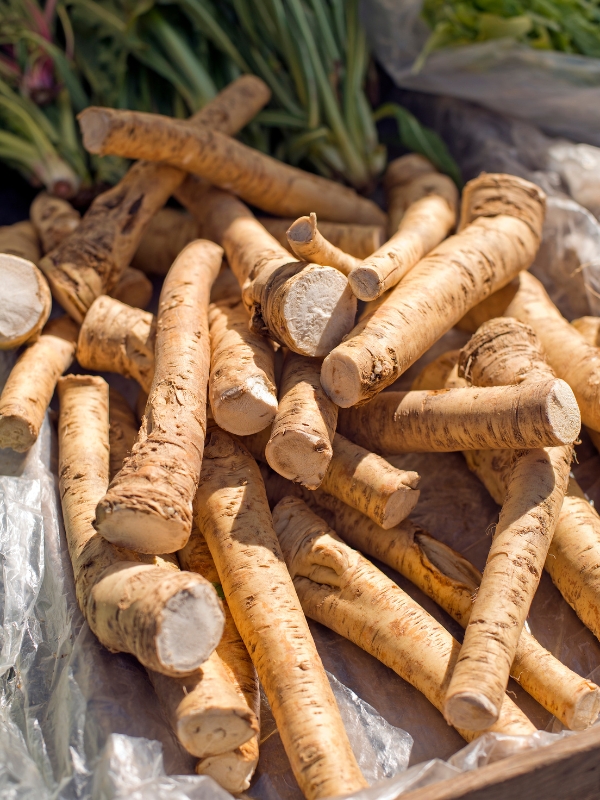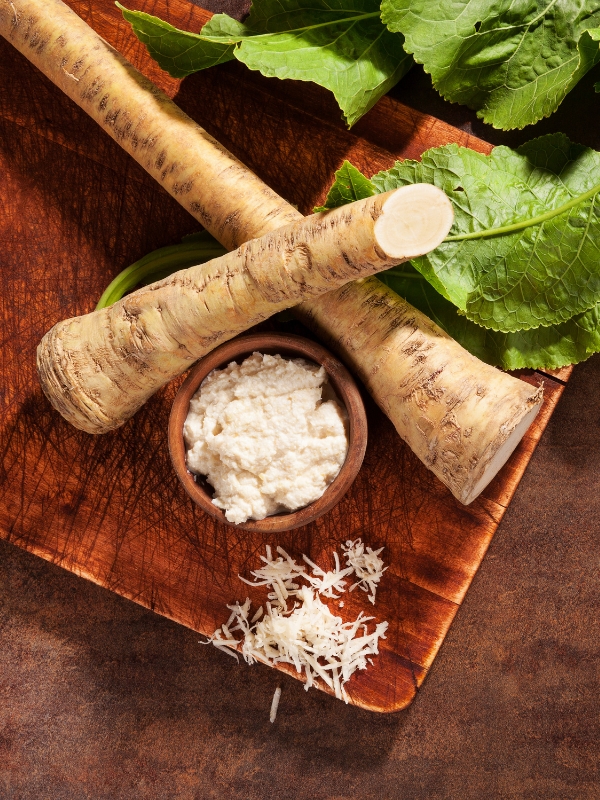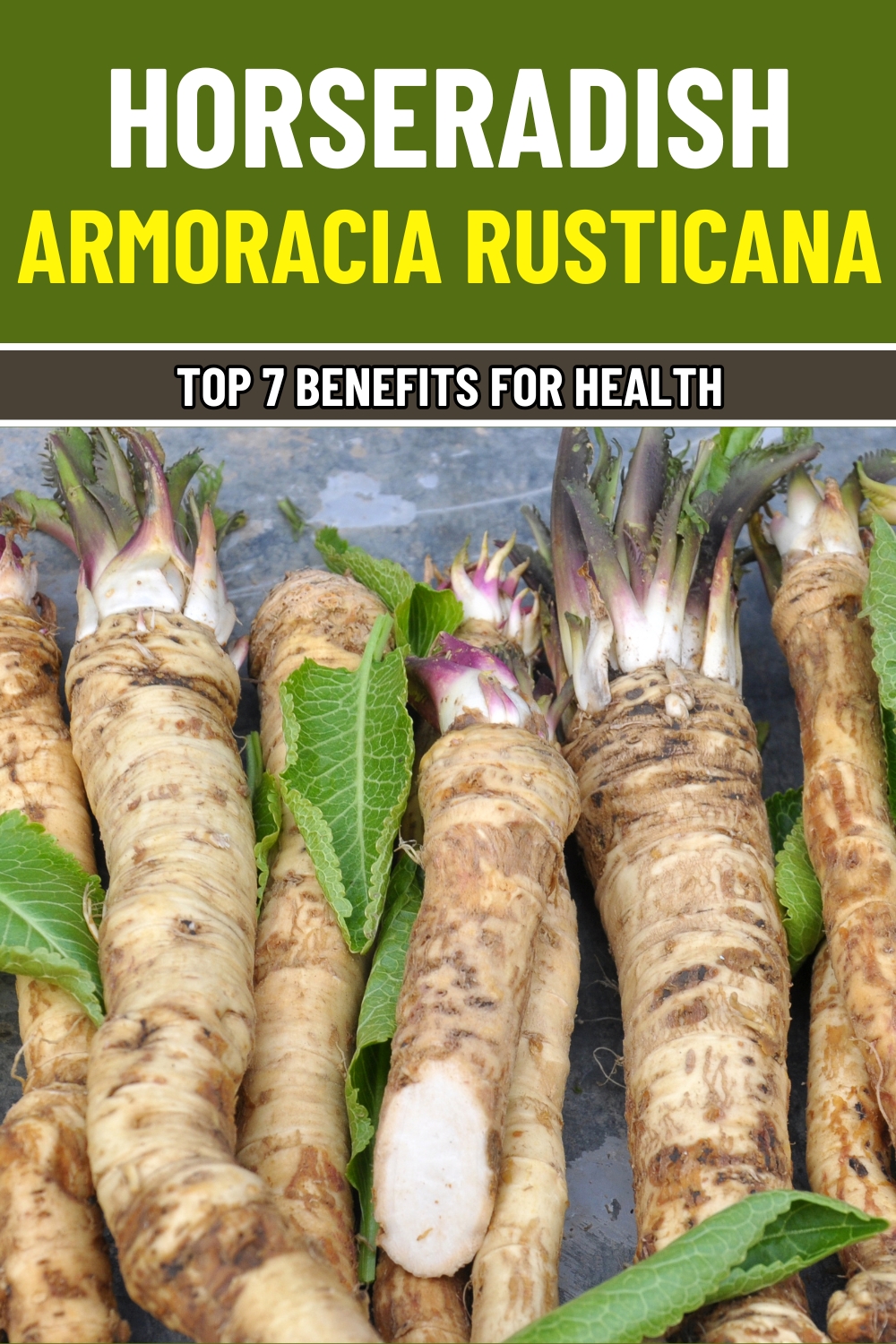Horseradish root (Armoracia rusticana) is often known for its bold, spicy kick in sauces and condiments. But did you know this unassuming root is a treasure trove of health benefits?
Packed with vitamins, minerals, and bioactive compounds, horseradish has been valued for centuries as a natural remedy. Today, modern science backs its potential to support respiratory health, fight inflammation, and even prevent certain diseases.
Let’s explore the incredible benefits of horseradish root, how it works, and why you should consider incorporating it into your diet.
#1. Natural Antibiotic Properties
Horseradish contains allyl isothiocyanate, a potent compound with antibacterial effects. This makes it effective against harmful pathogens like E. coli and H. pylori, which can cause digestive and urinary tract infections.
Research published in Frontiers in Microbiology shows that horseradish extracts can inhibit the growth of several bacteria, reinforcing its use as a natural antibiotic.
By including horseradish in your diet, you’re not just adding flavor but also a natural shield against infections.

#2. Boosts Immunity
Horseradish root is an excellent source of Vitamin C, with 100 grams providing about 29 mg, fulfilling nearly 32% of your daily needs.
Vitamin C enhances white blood cell activity, fortifies your immune system, and shortens the duration of colds and other infections.
According to a study in Nutrition Reviews, foods high in Vitamin C, like horseradish, play a crucial role in supporting immune function and reducing oxidative stress.
#3. Promotes Respiratory Health
The pungency of horseradish isn’t just for taste; it helps clear sinuses and alleviate respiratory congestion. Acting as a natural decongestant, horseradish clears mucus from the airways, providing relief during colds or allergies.
When consumed, the root’s volatile compounds stimulate nasal and sinus passages, easing congestion naturally.
If you struggle with chronic sinus issues, adding horseradish to your meals could offer much-needed relief.

#4. Supports Digestive Health
Horseradish stimulates the production of digestive enzymes, aiding in the breakdown of fats and improving nutrient absorption. Its dietary fiber content further promotes gut health by supporting regular bowel movements.
The compounds in horseradish enhance digestive processes, making it particularly effective in reducing bloating and indigestion.
Incorporating horseradish into your diet can keep your digestive system running smoothly.
#5. Anti-inflammatory Properties
Horseradish contains bioactive compounds like phenolic acids, which reduce inflammation and alleviate pain. This makes it beneficial for conditions like arthritis or sore muscles.
A study in Phytotherapy Research highlighted horseradish’s ability to lower inflammation markers, providing a natural alternative for managing chronic pain.
You can consume horseradish regularly to reduce swelling and joint discomfort.

#6. Cancer-Fighting Potential
The glucosinolates in horseradish convert to isothiocyanates, compounds that help detoxify carcinogens and reduce cancer risks. These compounds also promote the body’s natural detoxification pathways.
Horseradish is particularly rich in glucosinolates, with concentrations ranging from 2 to 296 µmol per gram of dry weight, depending on factors like plant variety, cultivation conditions, and growth stage.
For comparison, cruciferous vegetables like broccoli and Brussels sprouts typically contain 10 to 100 µmol per gram of dry weight, highlighting horseradish’s superior glucosinolate profile.
Research in Cancer Prevention Research suggests that the glucosinolates in horseradish, particularly sinigrin (which makes up about 83% of its total glucosinolates), are more concentrated than in other cruciferous vegetables.
#7. Aids in Weight Management
Horseradish is low in calories, just 48 kcal per 100 grams, but high in dietary fiber, promoting feelings of fullness and reducing overall calorie intake.
Its metabolism-boosting properties also help burn fat more efficiently, making it a smart addition to weight management plans.
For those seeking a flavorful way to support their fitness goals, horseradish is an ideal choice.

How to Use Horseradish Root
- As a condiment: Grate fresh horseradish and mix it with vinegar to create a tangy sauce for meats, fish, or sandwiches. This traditional preparation is a simple way to enjoy its health benefits while enhancing the flavor of your meals.
- Horseradish tea: Prepare a soothing tea by steeping freshly grated horseradish in hot water for 5–7 minutes. Add a touch of honey and lemon for a comforting drink that clears sinuses and boosts immunity.
- DIY poultice: To relieve joint pain or swelling, mix grated horseradish with warm water to create a paste. Apply it to the affected area, cover it with a cloth, and leave it on for 15–20 minutes. Be sure to patch test first to check for sensitivity.

Precautions for Using Horseradish Root
Excessive consumption can irritate the digestive tract or cause discomfort, so you should stick to small, manageable amounts.
Avoid using horseradish medicinally during pregnancy or while nursing, as its effects in these cases are not well-studied.
Always test when using horseradish topically, as it can cause irritation for sensitive skin.
Disclaimer
This article is for informational purposes only. Consult a healthcare provider before using horseradish medicinally, especially if you have existing health conditions or are on medications.

Why Horseradish Root Should Be in Your Diet and Medicine Cabinet
